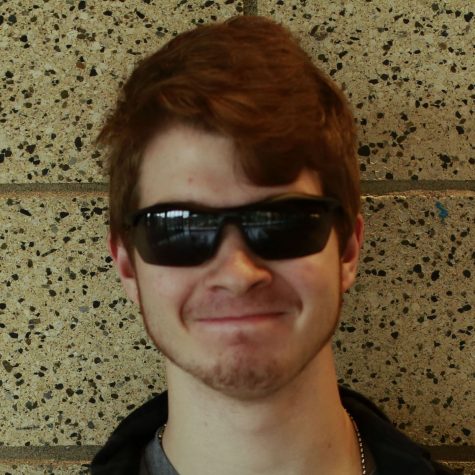Too Much Traffic, Too Little Time
TOO MUCH TRAFFIC? On a vibrant fall evening, numerous vehicles are clashing to get home ranging from students to adults. This amount of traffic in Issaquah is only seen during peak times (morning and evening). The traffic greatly increases commute times for many.
November 1, 2018
Every morning in Issaquah, a scene of chaos erupts. Heavy traffic haunts East Sunset Way and 2nd Avenue SE. A combination of students and adults commuting to school and work creates a distorted mess of traffic. Relatively new traffic calming zones implemented by the Issaquah City Council are supposed to reduce the clogging of the streets. This traffic calming zone was implemented in early 2017 and is considered a pilot program. However, students often come late to their first period classes and the traffic appears to be in similar condition.
The fairly new Olde town traffic calming zone pilot program implemented by the city of Issaquah in early 2017. They are designed to reduce traffic and improve safety traffic safety overall through a combination of “Speed humps, speed cushions, speed tables, speed tables, traffic circles and chicanes” according to the City of Issaquah. Freshman Lisa Klinger replied with a positive affirmation of having heard of the traffic calming zones. She says, “I think they are putting thought into traffic. I’ve been in another place that has been in a similar situation and when they put a traffic calming zone, it helped organize and create less traffic.”
High school students’ experiences and opinions are mixed when it comes to the routine traffic. When asked about experiences and opinions with the local traffic, junior Faith Hein says, “I just started driving to school this year. [The traffic] definitely has an impact on my commute to school. I leave super early and end up late. The traffic has also affected me when I ride the bus by making me late.” Senior Zeyuan Xu says, “It’s really bad. It’s so long. Everyone’s driving now days and it all adds up.” It is clear that some students are not big fans of the current situation of traffic at the High school. It is difficult to have a positive outlook on any traffic in the first place.
The students’ overall average time of commute to school is quite extraordinary. Klinger says, “Maybe 30 minutes if my dad’s driving, and if there is a ton of traffic, maybe up to an hour.” A commute that doubles due to traffic is quite extraordinary. Junior Michael Shipley says, “Fifteen minutes on an average day. That’s usually fine, going home takes longer since there is more traffic. It’s usually around 20 minutes.” To reduce the overall duration of the school commute, junior Faith Hein says, “If I avoid the traffic and leave early, it’s around 15 minutes.” However, without leaving early, she states, “With traffic it can be 45 minutes. It can be really bad.” Traffic definitely has a large impact on students’ commute times with some seeing a doubling and even tripling of times due to traffic.
Is there a way to reduce overall traffic in the school commute if it’s even possible in the first place? Some students like sophomore Dylan Hui believe that “rerouting some of the pathways that go through downtown Issaquah to different parts of Issaquah,” will help reduce traffic. Klinger says, “Create a different bus route for each school so we’re not cramming kids, or make new roads and sideways. The school could be more organized.” On the contrary, senior Natalie Sun says, “I don’t think there is a way [to reduce traffic].” Shipley says, “I don’t really think so, other than more carpooling. A lot of it’s caused by the buses going to school, [which] is fine. It’s just after school.” People seem to have a mixed response to reducing traffic, which is understandable. It is very difficult to make change on the scale of changing roads and buses.
Overall, there isn’t just a perception of too much traffic in Issaquah it’s actually become reality, especially on commutes to the High school. With some students ending up with doubling, even tripling of commute times, and ending up late to class, it’s clear why so many have such a negative outlook on the traffic. With difficulty to create change and find solutions in the roads, the seemingly unknown traffic calming zones, and the annual increasing population of Issaquah High School, it poses the question, will there ever be a solution to the traffic?



